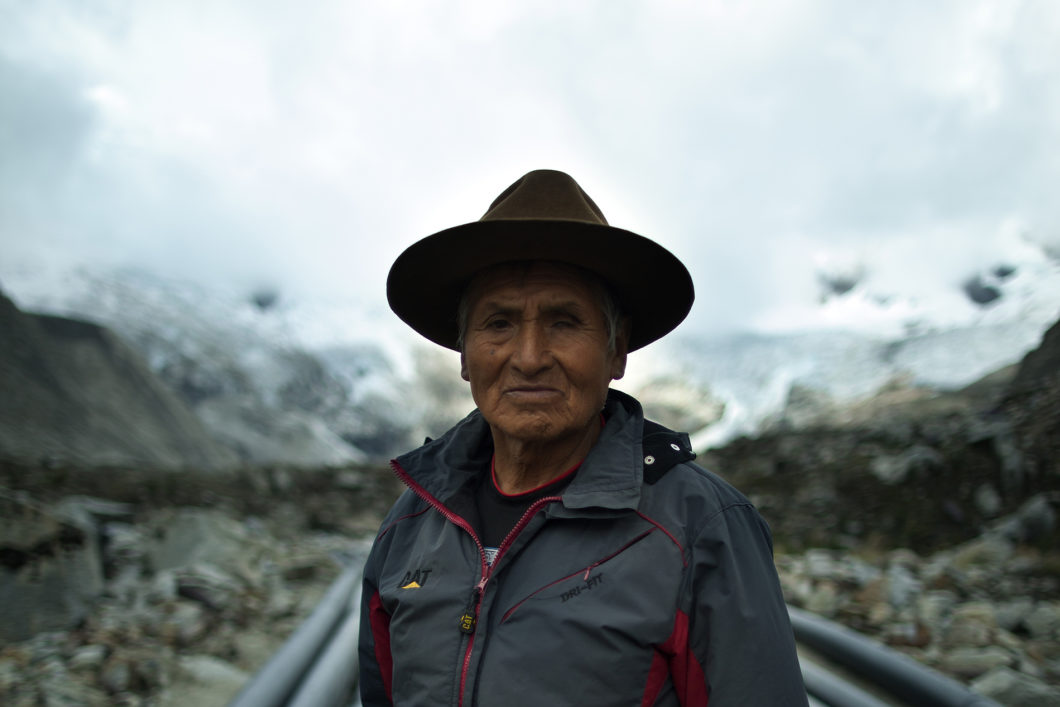Text by Naoh Walker-Crawford;
Image by Alexander Luna;
–-–
In May 2017, Palcacocha head guardian Pedro was unable to visit the lake
for several weeks because of commitments in his community. He did not
pay tribute to the lake beings as he regularly does. In the course of
two days, two large avalanches crashed from the mountains above the lake
into the water, causing waves of three metres. The water did not
overtake the Palcacocha dam, but washed up the provisional tubes and
left them lying functionless by the lake. According to Ricardo, the
engineer who oversees the lake, the avalanches took place because Pedro
failed to pay tribute to the lake and mountains. Pedro went further: ‘If
I don’t pay tribute, there will be a flood.’
For those who work closest with the lake, Palcacocha is not only a
threat and resource: it is a social being. Pedro has worked in the
mountains most of his life. When Ricardo first invited him to work at
Palcacocha as head guardian several years ago, the lake was at a
dangerously high level. The lake and mountain beings approached him in
his dreams. He said to them: ‘Why are you scaring us like this? Why are
you threatening us with such danger?’ They told him he must give them
coca leaves, sugar and cane liquor to appease them. After he complied,
the water level began to sink. Since then he performs tribute every two
weeks and gives the beings what they request from him in his dreams.
According to the lake guardians, Palcacocha emerges as a threat or a
resource depending on how they engage with the lake and mountains. If
they fail to show them respect, they will react angrily, potentially
causing avalanches and floods that threaten downstream populations. But
if the guardians treat them well, they will remain calm and give people
in the valley the opportunity to benefit from their waters.
Recent anthropological literature has posited that rural Andeans live in
distinct ontological ‘worlds’ in which they engage with earth beings
such as mountains and lakes. Their practices differ from those of
non-indigenous outsiders who engage with the environment with a more
scientific approach that distinguishes between nature and culture. For
the latter, earth beings are merely a form of belief or even
superstition (de la Cadena, 2015).
At Palcacocha, practices and conceptions overlap. Pedro and Jesús engage
with earth beings, but also value the scientific knowledge that forms
the basis for risk reduction interventions at the lake. On a daily
basis, they produce scientific knowledge by measuring the lake’s level
and monitoring the drainage system. Ricardo draws on his scientific
engineering knowledge to plan and implement particular interventions
based on these measurements. Though he performs a techno-political
labour, he also recognises the significance of earth beings for his
work. ‘I didn’t used to believe in them,’ he says. Then he had several
direct encounters with powerful mountain beings in the high
Andes. Now he sees Pedro’s tribute to the lake and mountains as an
integral aspect of managing risk at Palcacocha. Engineering provides one
component; tribute to the earth beings provides another. Shortcomings on
either side would place the people of Huaraz in danger. On his visits to
oversee the situation at Palcacocha, he makes sure to remind Pedro of
his duty to perform tribute.
Palcacocha is a lake that exists in many forms. Depending on the
context, Palcacocha emerges as a threat, a resource and a social being.
At times, the lake figures as all of these at once.1 What may appear
contradictory emerges out of complex relations between humans and their
environment in the Cordillera Blanca mountains. When people describe
Palcacocha in terms of risk, this often relates to what might be at
stake. In terms of resource, the lake can figure as an objective of
scientific management and as a source of life. Finally, those who work
at the lake describe it as a fellow being that requires respect to
appease its destructive force. Palcacocha possesses multiple and
overlapping meanings depending on how people engage with its water.
